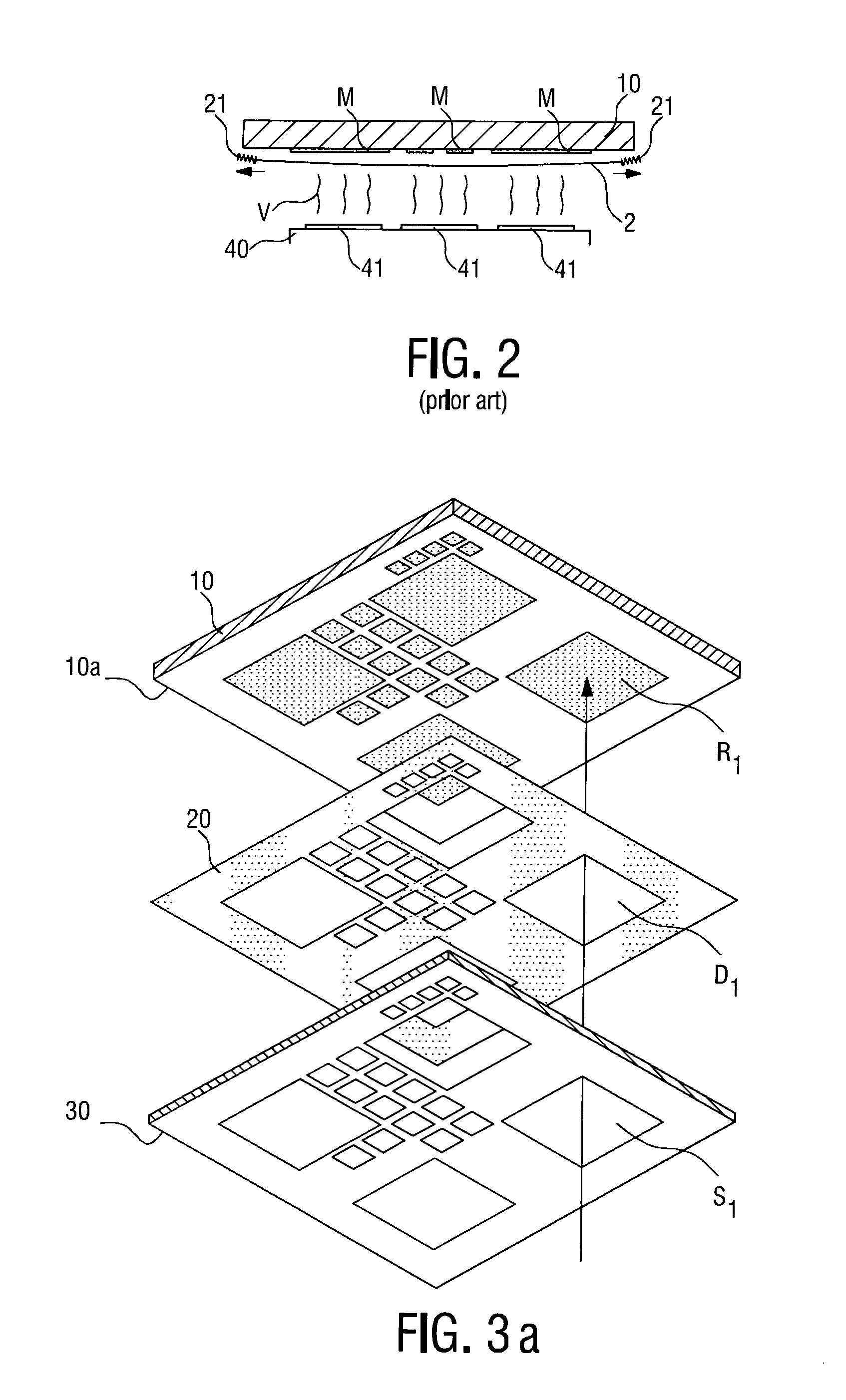Arrangement for Holding a Substrate in a Material Deposition Apparatus
a technology for arranging substrates and material deposition, which is applied in the direction of electrical devices, ion implantation coatings, coatings, etc., can solve the problems of poor product quality, no longer precise boundaries of material deposited in openings, and shadow masks that do not maintain satisfactory close contact with substrates. , to achieve the effect of straightforward and reliabl
- Summary
- Abstract
- Description
- Claims
- Application Information
AI Technical Summary
Benefits of technology
Problems solved by technology
Method used
Image
Examples
Embodiment Construction
[0039]FIG. 1a shows the relationship between a substrate 10, upon which material is to be deposited, and a shadow mask 2. The material is to be deposited on a deposition side 10a of the substrate 10. The shadow mask 10 has a number of cut-outs or openings, and each opening is associated with a corresponding region on the deposition side 10a of the substrate 10. For example, deposition opening D of the shadow mask 2 is associated with the corresponding region R on the substrate 10. For the sake of clarity, only a few openings are shown. Evidently, the openings can be distributed over the entire area of the shadow mask, and they can be of any required shape.
[0040]In OLED manufacture, as mentioned already, material is often deposited from below in a vapour deposition procedure. FIG. 1b shows a cross-section of a substrate 10 with a deposition side 10a upon which material M has been deposited from below. Usually, the thickness of the material layer is only in the region of nanometres, b...
PUM
| Property | Measurement | Unit |
|---|---|---|
| thickness | aaaaa | aaaaa |
| thickness | aaaaa | aaaaa |
| thickness | aaaaa | aaaaa |
Abstract
Description
Claims
Application Information
 Login to View More
Login to View More - R&D
- Intellectual Property
- Life Sciences
- Materials
- Tech Scout
- Unparalleled Data Quality
- Higher Quality Content
- 60% Fewer Hallucinations
Browse by: Latest US Patents, China's latest patents, Technical Efficacy Thesaurus, Application Domain, Technology Topic, Popular Technical Reports.
© 2025 PatSnap. All rights reserved.Legal|Privacy policy|Modern Slavery Act Transparency Statement|Sitemap|About US| Contact US: help@patsnap.com



